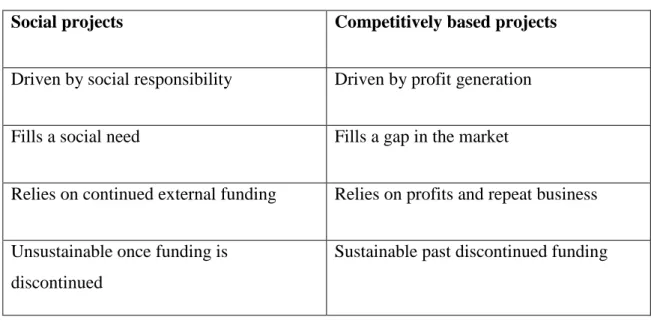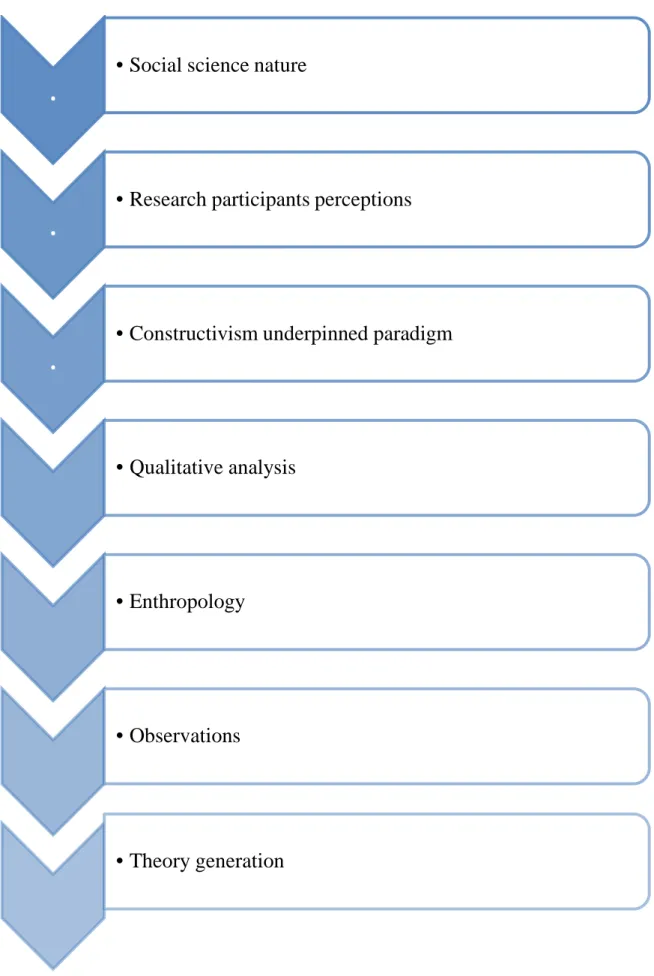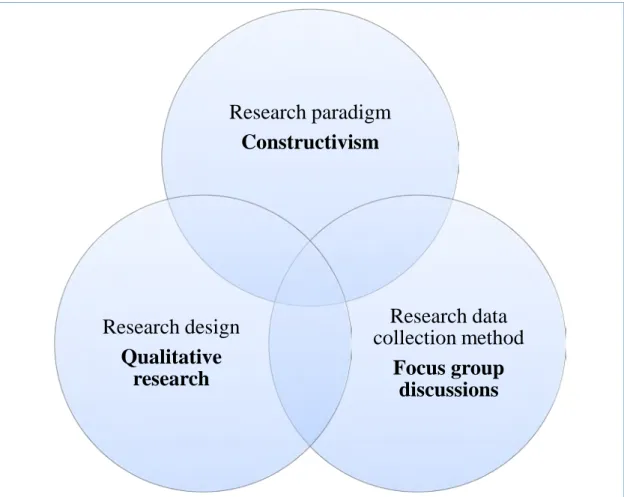The research investigates the contribution of smallholder sugarcane growers to LED in the Darnall area. The study was inspired by Gijima KZN's investment in rehabilitating smallholder sugarcane farms for LED promotion in Darnall. It could be concluded that smallholder sugarcane farmers have a positive contribution to LED in the Darnall area in direct and indirect ways.
Theme 1: The role of small-scale farmers in the LED of the Darnall
Theme 4: The need for the recognition of existing and new
Theme 5: Description of a small-scale farmer and the farmer’s
Research outcomes and implications 62
Ethical clearance B: Gatekeepers letter
CHAPTER ONE
- Introduction
- Background to the problem
- Problem statement
- Objectives
- Key research questions
- Significance
- Research methodology
- Definitions of key concepts
- Outline of chapters
- Conclusion
Determine the outcomes of the investment project 'Rehabilitation of Sugarcane for Small-scale Farmers in the Darnall Area'. How are the challenges associated with LED implementation and sustainability perceived in the Darnall area? However, the implementation of LED is done at a local scale, therefore this study examines the role of small-scale sugarcane farmers in the LED of the Darnall area.
CHAPTER TWO
- Introduction
- Local Economic Development
- Meaning of LED: Background
- Rise in LED: South African context
- LED in South African context
- Role of government in LED
- Background to sugarcane cultivation in Darnall
- LED Partnerships
- Integrated partnerships
- Gijimaprogram: Rehabilitation of Sugarcane for Small-scale Farmers in the Darnallarea
- LED implementation
- Sustainability
- Challenges
- Conclusion
The task of planning for LED has fallen to local governments, Rogerson (2011) agrees that LED policy development is the task of local government and observes that the policy development process has changed due to the establishment of the then new government. undertaken by local governments and the DPLG introduced the LED fund in 1999. However, Rogerson (2010b) says that the introduction of the LED fund caused confusion among many municipal officials, as they were unfamiliar with what LED is and what it entails; the results were supported by the study conducted by. One of the projects funded by the Gijima program was the rehabilitation of sugarcane for small-scale farmers in the Darnall area. The aim of this study is to determine the impact of the Gijima project in assisting small-scale farmers.

CHAPTER THREE Research Methodology
Introduction
Research paradigms
- Postpositivist
- Constructivism
- Transformative
- Pragmatism
- Theories adopted in this study
Due to multiple realities, Creswell (2014) emphasizes that the researcher must involve the participants in the research in a way that encourages interaction, discussion and exchange of opinions among the research participants. Creswell (2014) states that instead of imposing a theory on the research subject, it is the researcher's responsibility to prepare interpretations of the different realities of the research participants. Creswell (2014) further explains that the philosophical assumptions underlying the research must be geared towards advocating for change.
Creswell (2014) says the research question is focused on a single specific issue, which is clearly indicated in the research. Creswell (2014) further states that rather research focus, since the method is ideal for answering the research question, the focus of the research is entirely on the research problem. The paradigm adopted in this study is constructivism, due to the nature of the research.
The research seeks to understand the role of smallholder farmers in LED in the Darnall area. Essentially, this means that the research question is answered from multiple sources and is a collaboration of different perspectives on the same topic. The question of how adopted in this study provides a platform to generate theory based on the answer given, the research questions posed in this study are open-ended and do not have definitive answers in contrast to the post-positivist scientific paradigm.
Open-ended questions are not restrictive and allow the research participants to expand, so the researcher may be able to make theories that do not draw definitive conclusions about research findings.
Research design
- Quantitativedesigns
Focus group discussions
Qualitative research
- Qualitative designs
- Rationale for a qualitative analysis
- Data collection
- Sampling method
- Focus group discussions
- Construction of questions and Objectives
- Data collection procedure
- Research evaluation: Trustworthiness of the study .1 Validity
- Ethical considerations
- Protection of research participants
- Informed consent
- Ethical considerations for data collection
- Conclusion
The method of data collection, transcription of the data, and presentation of the data in this study reflects the views and actions of the research participants. The research participants' observations were noted and formed part of the data collected. The views and perceptions brought to the study by the researcher are noted and distinguished from those of the research participants.
The research's broad research question was how smallholder sugarcane farmers influence or promote LED in the Darnall area. The collection of research data was consistent for all research participants; the data collection method of focus group discussions was used. The research participant groups covered by this research did not fall under any of the vulnerable groups category.
Preservation of confidentiality and anonymity is essential for the protection of the research participants and was adhered to in this study. All the above requirements of the informed consent form were complied with and consent was obtained from the research participants in this study. No form of deception was used in this study; the research was transparent and unambiguous.
Ethical considerations include protection of research participants, informed consent of research participants, and data collection methods.

CHAPTER FOUR Research Findings
- Introduction
- Theme 1: Confusion as to how small-scale farmers contribute to LED
- Inadequate and inconsistent information about the LED strategy from LED agency officials
- The state of LED for the Darnall area compared to the rest of the municipality
- LED agency officials lack knowledge to make a valid assessment
- Investment into small-scale farmers fails to extend into the community The research findings from the focus group discussions imply that Gijima investment in
- Theme 2: Contradictory opinions on the effectiveness of the Gijima project investment
- The positive views on the rehabilitation of the sugarcane farms
- The negative views of on the rehabilitation of the sugarcane farms
- LED agency officers unsure as to how to support investment projects The research findings from the focus group discussions conducted with the LED
- Theme 3: Small-scale farmers experience an extensive range of challenges that hinder their contribution to LED
- Unpreventable and preventable challenges that may be solved
- Challenges of competitiveness and sustainability are linked
- Theme 4: The need for partnerships in driving LED
- Confusion amongst LED officials and small farmers as to the role of partnerships in LED
- Theme 5: The description of a small-scale farmer
- Small-scale sugarcane farmer definition is dependent on the amount of sugarcane produced and the land size
- Small-scale farmers are uncomfortable sharing their background
- Conclusion
The participants in the research had different views on the contribution of small-scale sugarcane farmers to the LED in Darnall. None of the research participants attempted to answer the second part of the question. Gijima was right, subcontractors were the problem." The investment in the rehabilitation of the sugarcane farmers was done by a subcontractor, who did the work to rehabilitate the small-scale sugarcane farmers.
Despite clarity on the issue of how the LED Agency supports projects such as Gijima's 'Sugarcane rehabilitation for smallholder farmers in the Darnall area', confusion remains. Research Participant 2 stated that "we want individual testing, [they're] not interested in small volume, [the mill] doesn't want to do an individual, unfair market." The research findings point to a link between sustainability challenges and the competitiveness of smallholder farmers. Focus group discussions with smallholder farmers revealed that there are no formal or recognized partnerships that are addressed by research participants.
The research participants agreed that small sugarcane farmers had not formed partnerships. The feelings of frustration were observed when Research Participant 3 said, "Not getting any help, hopefully this year will." The research results from LED. The question related to partnerships in LED was asked of the research participants about how they supported LED initiatives, referring to a participant in the vegetable garden project 13 stating "We support by giving advice." The focus group discussion with the small farmers revealed a lack of partnerships, but a desire and willingness to enter into partnerships.
A few of the research participants referred to no partnerships formed with the government, participant 10 said that "No partnerships, no assistance from the government." Research Participant 5 also stated that "No government assistance [that I'm aware of]." The research findings indicate that the LED officials are unclear about what the agency's role is in partnerships formed for LED.
CHAPTER FIVE Discussion
- Introduction
- Theme 1: The role of small-scale farmers in the LED of the Darnall area
- LED agency officials unable to assess the contribution of small-scale sugarcane farming to LED
- Small-scale farmers indirectly drive LED in the Darnall area
- Theme 2: Investment into small-scale sugarcane farms sparks debate on the promotion of LED in the Darnall area
- Theme 3: The challenges faced by small-scale farmers inhibit their contribution to the LED of Darnall
- Theme 4: The need for the recognition of existing and new partnerships in the LED of Darnall
- Theme 5: Description of a small-scale farmer and the farmer’s background
- Conclusion
The research findings served to indicate that the contribution of smallholder farmers to LED in the Darnall area was ambiguous among the research participants. Sugarcane farming is the lifeblood of the Darnall area economy, and smallholder farmers have a direct impact on that economy. The interpretation of the research results indicates that the LED officials were unable to provide an assessment of the condition of the LED in the Darnall area.
Despite the research findings, the researcher observed that the investment enabled small sugarcane farmers to positively impact the LED in the Darnall area. The aim of the Gijima project was to rehabilitate the farms, enabling the small farms to competitively produce sugarcane and supply to the local mill. Small cane farmers therefore directly and indirectly drive the LED in the Darnall area.
The disagreement over the effectiveness of the Gijima project 'Rehabilitation of Sugarcane for Smallholder Farmers in the Darnall Area' sparked great debate. Sustainability challenges experienced by farmers on an individual and group scale have far-reaching implications for the Darnall area's LED. Despite the small farmers' lack of recognition of the partnerships they have with the Darnall mill, this partnership enables the improvement and sustainability of LED in the area.
The question of defining and describing a small-scale farmer was posed to the research participants (small-scale farmers) as an ice-breaker in the focus group discussion.
CHAPTER SIX
- Introduction
- Research problem assessment
- Research outcomes and implications
- Research conclusion
- Research limitations
- Recommendations based on research findings
- Recommendations for future research studies
The idea of the participation of an LED specialist was a side issue in light of the research results. The study results were unexpected, despite the majority of outcomes being consistent with the literature. The research revealed that the research participants lacked knowledge and understanding of LED.
The researcher did not anticipate that the research participants had no knowledge of the meaning and meaning of LED. The researcher believes that the research findings cannot be interpreted without taking into account the lack of knowledge and understanding of the research participants about LED. The result of the research was unexpected for the researcher, despite being in agreement with the literature.
The implication of the research results is that smallholder farmers contribute to the LED of the Darnall area through direct and indirect means. The results of the research identified challenges that were within the control of small-scale sugarcane farmers and challenges beyond their control. The sustainability of small-scale sugarcane farms was also a major concern for research participants.
The research outcomes were consistent with literature with the exception of the research findings.
LIST OF REFERENCES
2014) Challenges in Bioenergy Production from Sugarcane Mills in Developing Countries: A Case Study. Energies, Volume 7, p. South Africa: From City to City. Available at: https://placesjournal.org/article/south-africa-from-township-to-town/. 2011) Addressing Challenges in Sugarcane Factories and Refineries. 2013) Examining the foundations of qualitative research: a review of social work dissertations Negotiating the Global and the Local: Evaluating Development Through Public-Private Partnerships in Durban, South Africa.
Available from: http://www.isi-web.org/component/content/article/5- root/root/81-developing [Accessed from: 15 May Road investments enabling local economic development. Southern African Journal of Science SALGA Position Paper on Local Economic Development [Online] Knowledge Hub- Documents- SALGA Position Papers. Journal of Applied Quantitative Methods, Volume 8, p Donor Driven Local Economic Development in Peripheral Areas of KwaZulu-Natal: The GijimaProgramme.
2007) Emerging Local Economic Development Policies and Practices in South Africa with a Special Focus on Smaller Urban Centres. Urban Forum, Volume 18, p. 1–11. 2010a) Err to: In search of public-private partnerships for local economic development in South Africa. 2010b) In search of public-private partnerships for local economic development in South Africa.
2014) The Impact of Smallholder Irrigation on Household Welfare: The Case of Tugela Ferry Irrigation Scheme in KwaZulu-Natal, South Africa. Water South Africa, Volume 40, Issue 1, p Towards the development of a web-based blended learning environment at the University of Botswana.
